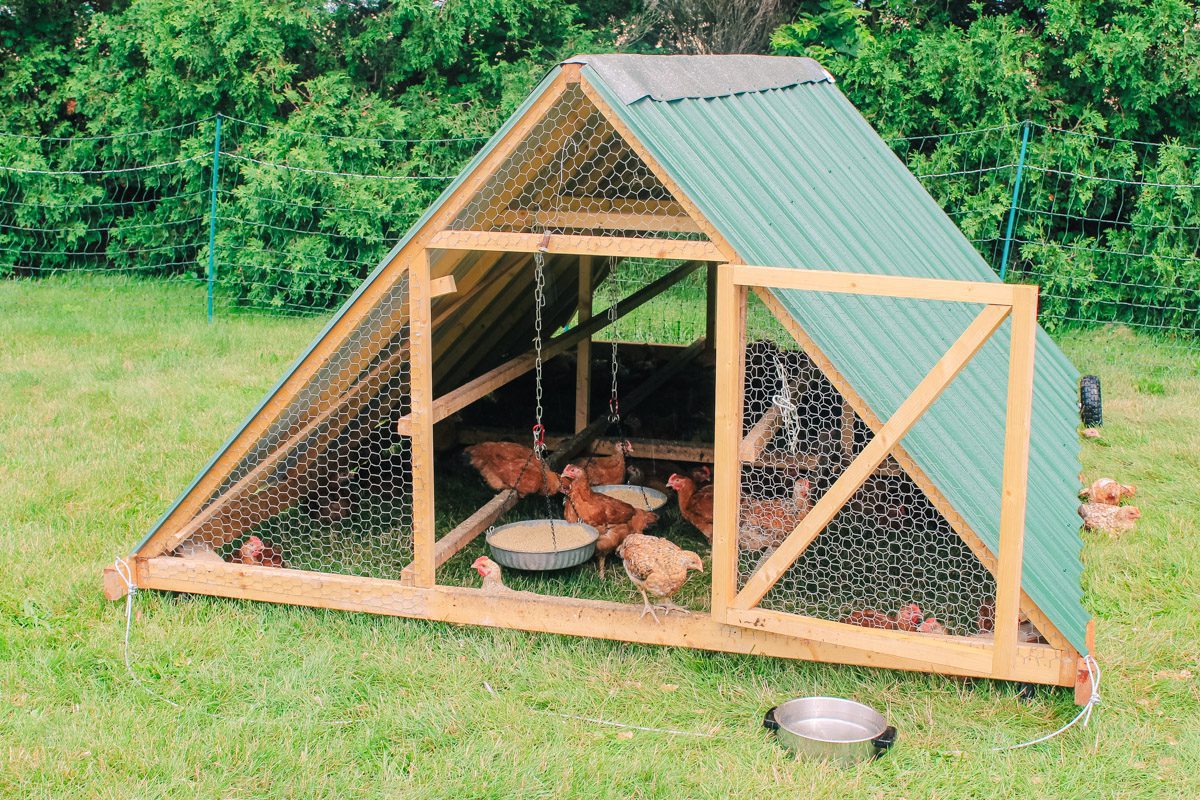
Large, durable and easy to move, our a-frame chicken tractor made raising chickens a snap. Learn how we built our mobile chickshaw and the reasons we selected the a-frame design.

This post contains affiliate links, which means I make a small commission at no extra cost to you. In any case, I only link to products we actually use on our homestead and that I believe can truly benefit to you. See my full disclosure here.
When my parents first moved to their 3 acre property several years back, they started small with mighty goals of growing their homestead. Large gardens full of fresh veggies . Orchards with sweet fruit handpicked right from the vine. Farm fresh eggs . And meat raised right at home was the big dream. Through much learning, they now have a flock of egg layers, a bountiful garden and a blossoming orchard that they will soon reap the benefits from. The next project they wanted to tackle was meat birds.
As newbies to the meat world, they dipped their toes into the water and successfully raised their first batch of meat chickens last summer.
… and let me say, there is nothing like the taste and nutrients of a homegrown chicken versus a commercially raised chicken you’d purchase from a grocery store.
This spring they decided to up their game and raise four times the amount of meat chickens compared to the previous year. With the increase of birds, they needed a bigger space for them to stay. The barn was perfect when the chickies were little but as they grew, the chickens needed fresh air, more space and green grass.
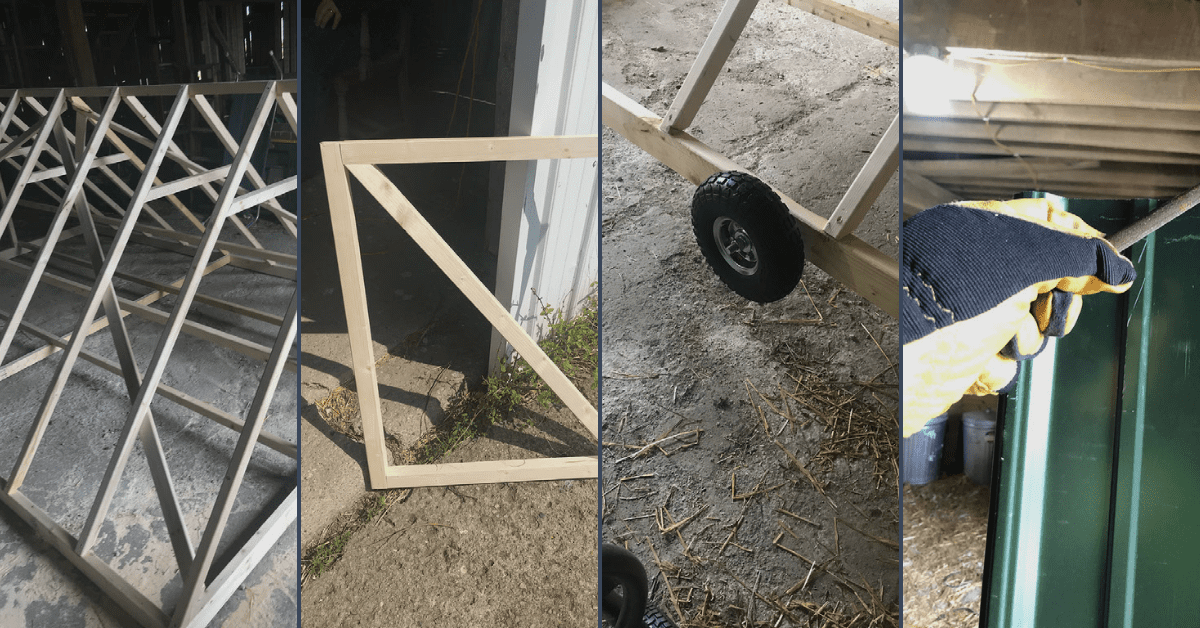
Enter the mobile chicken shelter. Aka chicken tractor or chickshaw.
My family was inspired by the idea of building a chicken tractor from a video we watched on YouTube from Nick Ager at Growing Back to Eden . His DIY chickshaw housed his egg laying chickens quite comfortably.
Shortly after watching Nick’s video, we began digging into how to build a chicken tractor. There are so many shapes, designs and sizes to choose from when building a mobile chicken shelter. We sought advice from chicken masters like Joel Salatin and Justin Rhodes and what types of mobile coops they recommended.
We ended up selecting an a-frame chicken shelter design from the book, The Small-Scale Poultry Flock by Harvey Ussery. With a few modifications to the original plan, the 8’ x 12’ shelter was perfect for my family’s homestead.
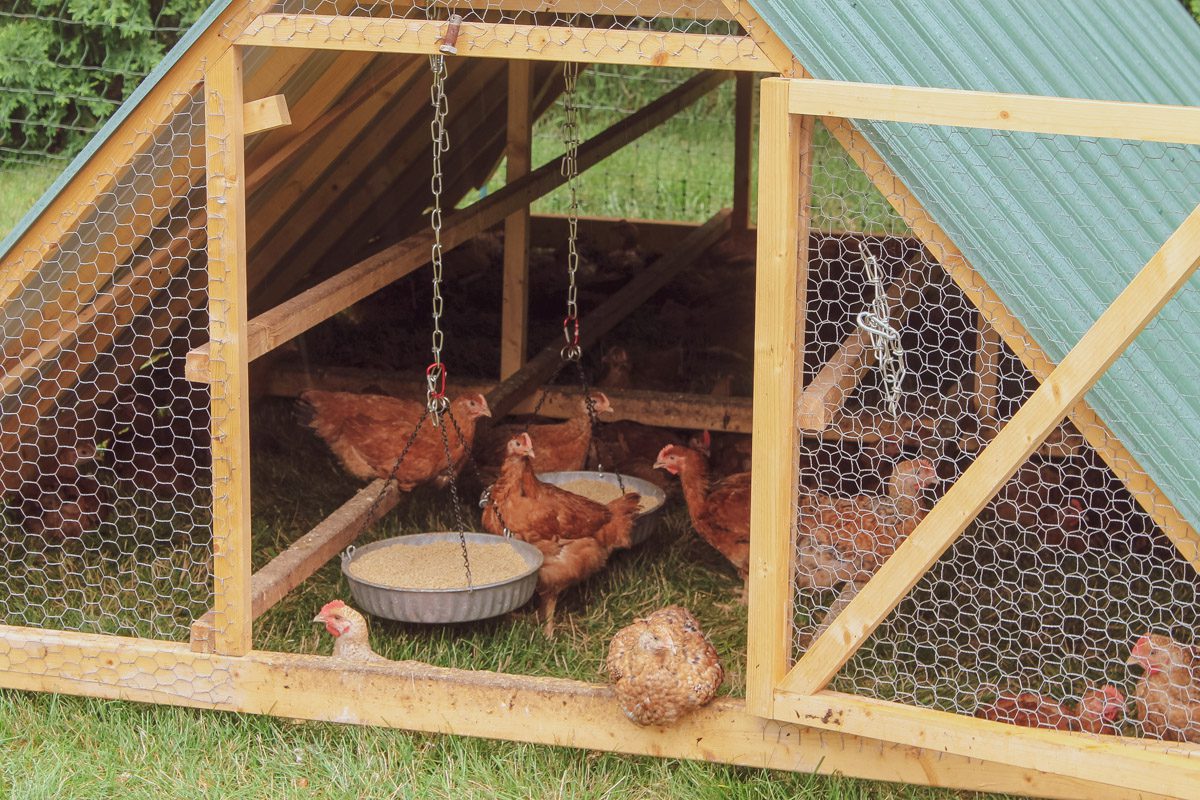
A chicken tractor, also known as a chickshaw or an ark is a mobile coop that allows the chickens to get a fresh spot of grass or pasture every 1-3 days. Much healthier than a closed in environment, the portable coop provides shelter from predators and unfavorable weather while allowing the chickens to roam around and scavenge for bugs. Chicken tractors are commonly used to raise poultry intended for meat. However, there are several types of mobile chicken shelters that include a coop specifically for egg layers.
Size – At 8 feet by 12 feet, the shelter accommodates up to 65-70 meat birds. According to Joel Salatin, a chicken requires 1.5 square feet of space. The chicken tractor we built is used only for sleeping and shelter from harsh weather and predators. The chickens have plenty of space to explore outside of their shelter within their electrified enclosure.
If you use the shelter as a permanent residence for egg laying chickens, you could easily fit 15-20 chickens.
Movability – Reasonably lightweight, the shelter can be moved by hand or pulled by a riding lawn mower.
Protection – The roof and sides are covered with solid painted steel roofing but the front and back are surrounded with chicken wire. This provides the birds shelter from rain and shade from the heat while still allowing a flow of air to move through.
Durability – My family’s farm is WINDY! The a-frame is much more stable in strong winds than a box design. Built with durable materials, the service life of the chicken tractor is 25+ years.
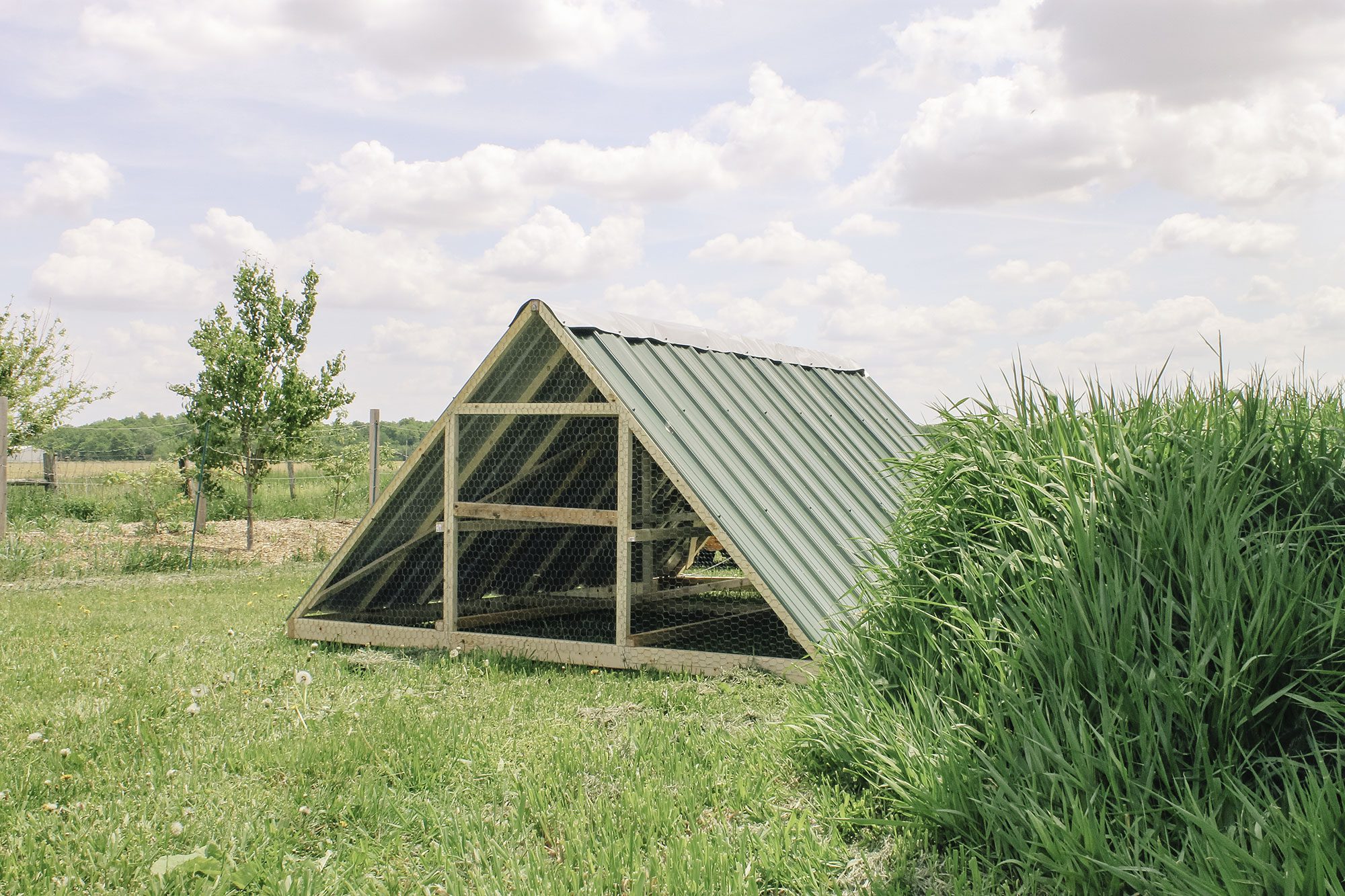
Building a mobile chicken coop has proved to be a success. Along the way we learned a lot about raising meat chickens and what works and doesn’t work when building a chicken coop.
With our big list of homestead goals, I foresee my family and I building additional chicken tractors in the future.
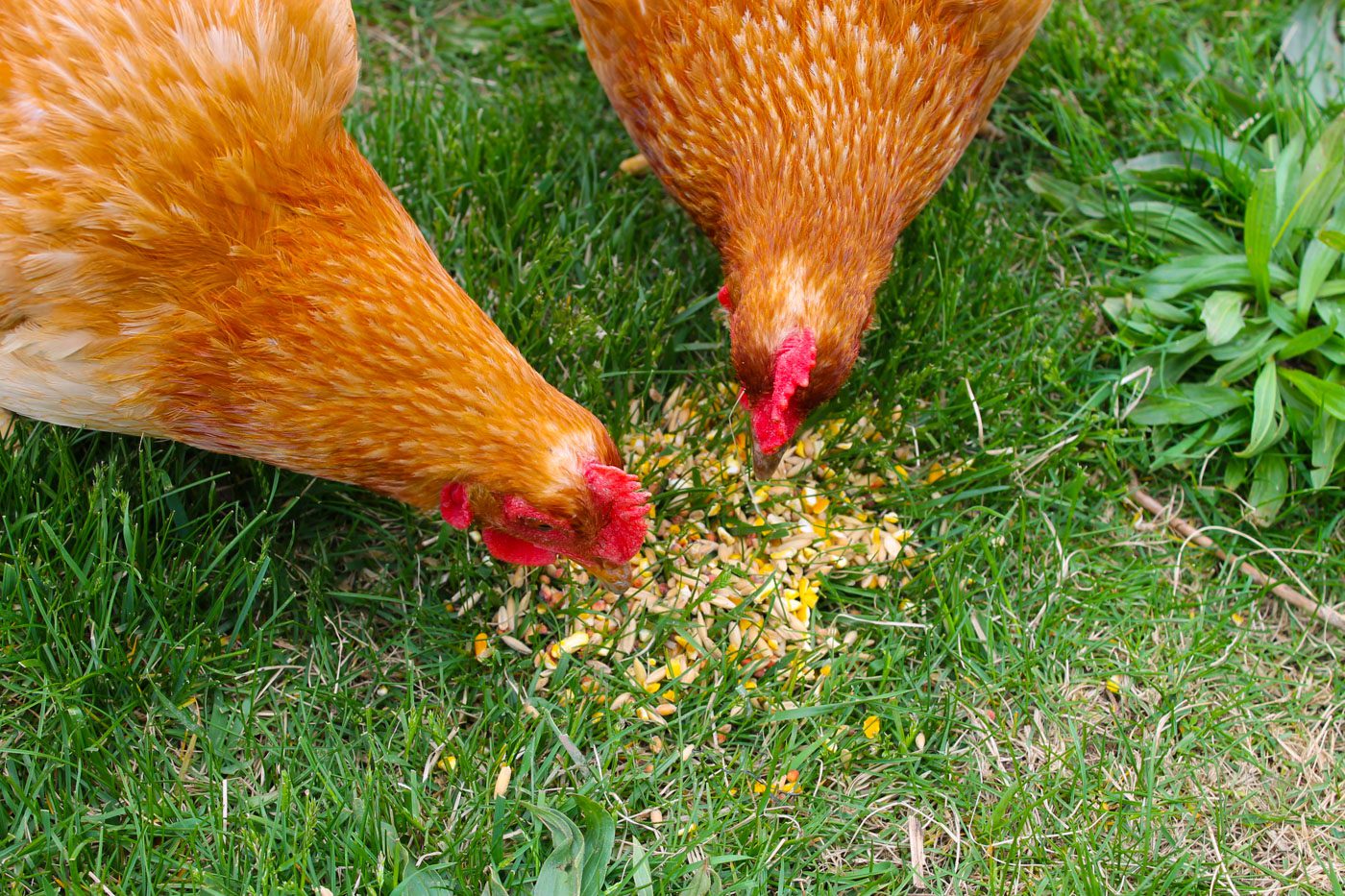
Most times a DIY chicken coop is cheaper than purchasing a fabricated option. Especially when you are able to obtain reclaimed materials. If you already have the tools to build the shelter, all you will need are a few building supplies which is much less costly than a prebuilt option. Plus by building it yourself, you will be able to custom your coop to fit your specific needs.
The size of your flock, coop and land will depend on how often you move your chicken tractor. 1-3 is ideal to give your chickens fresh grass and a clean space to forage. For us personally we found moving the mobile coop every other day worked best for our circumstances.

No two coops are ever the same. There are hundreds of designs to choose from. The layout of your mobile coop will depend on your shelter needs, flock size and the materials you select (repurposed items or supplies purchased from a hardware store).
Are you ready to build a chicken tractor for your homestead? Get the step by step plans to make a mobile a-frame shelter by purchasing The Small-Scale Poultry Flock book.
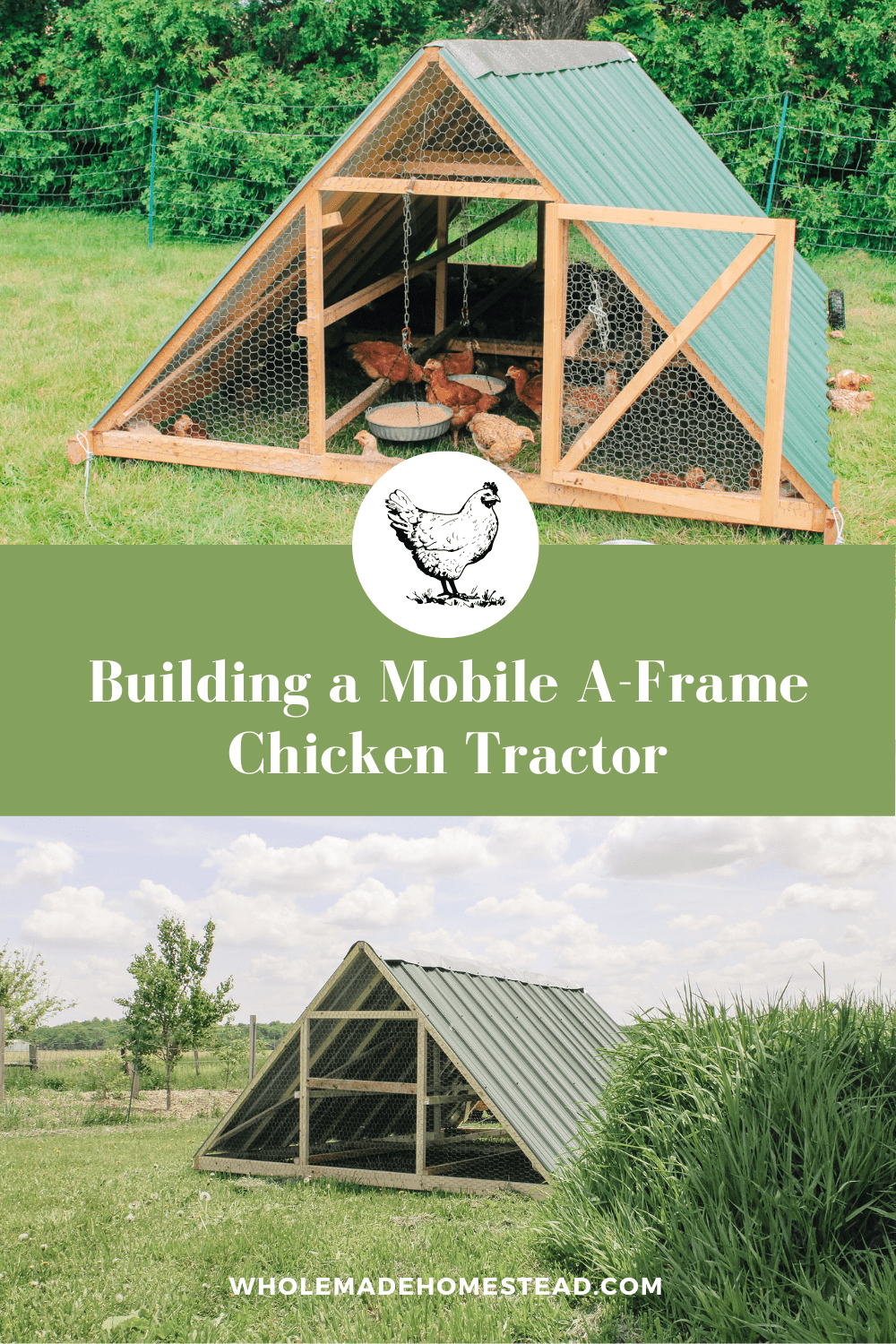
I love this chicken coop idea I have three geese and this is wonderful I have been looking for house ideas for them I have had them for about 3 years so this is such a great idea and I can’t wait to go get the materials for this new build there coop right now is I need of a replacement so this is great thanks for the idea Reply
Alisha Christy on December 31, 2023 at 10:39 pmWonderful! I’m so glad our chicken tractor idea inspired you. I think it’ll work out beautifully for your geese. Reply

Welcome to WholeMade Homestead! I'm so glad you're here! Follow along to discover nourishing recipes, ways to live naturally and tips for living the simple homestead life.
Get wholesome recipes, DIY tutorials and advice for running a homestead straight to your inbox.